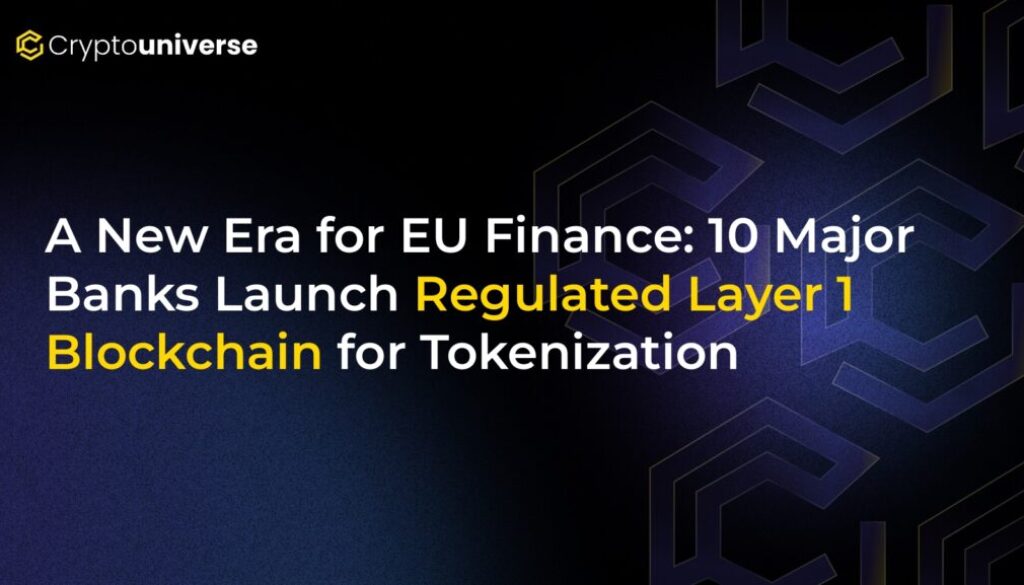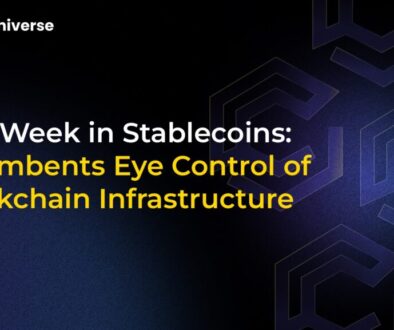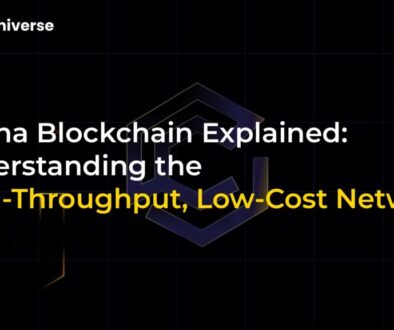A New Era for EU Finance: 10 Major Banks Launch Regulated Layer 1 Blockchain for Tokenization

A Foundational Shift in European Capital Markets
The landscape of European finance is on the brink of a seismic shift. In a landmark move, a powerful consortium of ten major European financial institutions has announced the creation of the Regulated Layer One (RL1), a shared blockchain network designed to revolutionize capital markets through tokenization. This initiative signals a clear transition from experimental blockchain projects to production-grade infrastructure, setting the stage for a more efficient, transparent, and unified financial ecosystem across the European Union.
Built upon the existing SWIAT network, which has already processed over €600 million in volume, RL1 is not just another proof-of-concept. It’s a strategic endeavor to build the foundational rails for the future of digital assets in one of the world’s largest economies.
Who is Behind the Regulated Layer One (RL1) Network?
The strength of the RL1 initiative lies in the collaborative power of its founding members. This isn’t a tech startup’s dream; it’s a calculated move by the titans of European banking. The consortium includes a diverse group of banking powerhouses, ensuring broad expertise and a solid foundation for adoption.
The ten founding institutions are:
- DekaBank
- LBBW
- Commerzbank
- DZ Bank
- Helaba
- Standard Chartered
- Raiffeisen Bank International
- UniCredit
- SEB
- Erste Group
This collaboration, spearheaded by SWIAT (founded by DekaBank), aims to create a standardized, regulated, and interoperable network, tackling the fragmentation that has long plagued the European capital markets.
The Core Mission: Unlocking the Power of Tokenization
At the heart of the RL1 network is one of the most transformative concepts in modern finance: tokenization. In simple terms, tokenization is the process of converting rights to an asset into a digital token on a blockchain. These assets can be anything from stocks and bonds to real estate and private equity.
Why is this so important? The
- Enhanced Liquidity: By digitizing traditionally illiquid assets like real estate or private company shares, RL1 can make them easier to trade, opening them up to a wider pool of investors.
- Fractional Ownership: Tokenization allows high-value assets to be broken down into smaller, more affordable pieces, democratizing access to investment opportunities.
- Streamlined Settlement: Blockchain technology enables near-instantaneous settlement of transactions (T+0), drastically reducing the counterparty risk and operational costs associated with the current T+2 system.
- Increased Transparency: A shared, immutable ledger provides a single source of truth for all network participants, improving transparency and reducing the potential for disputes.
- 24/7 Markets: Unlike traditional markets that operate on fixed schedules, a blockchain-based network can potentially operate around the clock, catering to a global investor base.
How RL1 Differs from Other Blockchain Networks
The blockchain world is vast, but RL1 is being purpose-built for a specific, highly regulated environment. Here’s how it stands apart:
RL1 vs. Public Blockchains (e.g., Ethereum)
While public blockchains like Ethereum are permissionless (anyone can join and participate), RL1 is a permissioned network. This means only vetted, regulated institutions can act as validators and participate. This “walled garden” approach is essential for ensuring compliance with strict financial regulations like KYC (Know Your Customer) and AML (Anti-Money Laundering).
RL1 vs. The UK’s Regulated Liability Network (RLN)
RL1 is often compared to the UK’s RLN, but their focus differs. The RLN is primarily aimed at revolutionizing wholesale payments and settlement using tokenized commercial and central bank money. In contrast, RL1 is laser-focused on capital markets—the issuance, trading, and custody of tokenized securities.
Aligning with Europe’s Vision for a Digital Future
The launch of RL1 is not happening in a vacuum. It perfectly aligns with the European Union’s broader strategic goals for a single, unified capital market. European Central Bank (ECB) officials, including Piero Cipollone, have long advocated for using Distributed Ledger Technology (DLT) to break down cross-border barriers and create a more integrated Capital Markets Union (CMU).
By providing a common, regulated infrastructure, RL1 could become a critical pillar of this vision. It offers a practical solution for implementing regulations like the EU’s DLT Pilot Regime, which provides a legal framework for experimenting with tokenized financial instruments.
What’s Next for European Finance?
The creation of the
For investors, businesses, and regulators, RL1 represents a glimpse into a future where capital markets are more accessible, efficient, and secure. As the network develops and more institutions join, it has the potential to become the primary operating system for digital assets in Europe, cementing the continent’s role as a leader in financial innovation.


